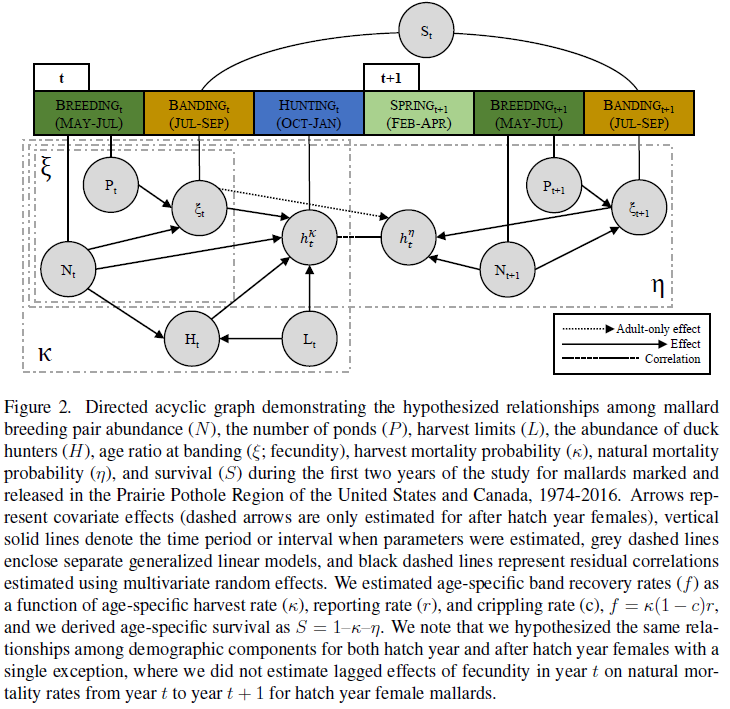Applied population ecology
The capture-mark-reencounter, aerial survey, and harvest data collected on North American waterfowl populations comprise one of the most comprehensive community population monitoring efforts in human history. I use these and other longitudinal survey and demographic data to better understand landscape scale drivers of population trends. Together with a large number of collaborators, I develop novel analytical techniques and models that allow for incorporating uncertainty regarding processes that drive demographic parameters, and more accurately forecast population change given anthropogenic impacts such as harvest, land use, and climate change.
Representative Publications
Forister ML, Grames EM, Halsch CA, Burls KJ, Carroll CF, Bell KL, Jahner JP, Bradford T, Zhang J, Cong Q, Grishin NV, Glassberg J, Shapiro AM, Riecke TV (2023) Assessing status and risk for western butterflies in the context of climate change, demographic uncertainty, and heterogeneous data sources. Ecological Monographs, 93, e1584
Riecke TV, Sedinger BS, Arnold TW, Gibson D, Koons DN, Lohman MG, Schaub M, Williams PJ, Sedinger JS (2022) A hierarchical model for jointly assessing ecological and anthropogenic impacts on animal demography. Journal of Animal Ecology, 91, 1612-1626.
Riecke TV, Lohman MG, Sedinger BS, Arnold TW, Feldheim CL, Koons DN, Rohwer FC, Schaub M, Williams PJ, Sedinger JS (2022) Density-dependence produces spurious relationships among demographic parameters in a harvested species. Journal of Animal Ecology, 91, 2261-2272.
Koons DN, Riecke TV, Boomer GS, Sedinger BS, Sedinger JS, Williams PJ, Arnold TW. (2022) A niche for null models in adaptive resource management. Ecology and Evolution, 12, e8541.
